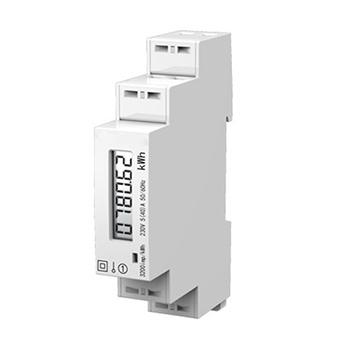Energy Meter Installation and Maintenance
Fri, Dec 08 by ATO.com
An energy meter, used to measure electrical energy consumption, requires specific procedures for installation and maintenance. Below are key points from the installation and maintenance specifications compiled by ATO industrial automation.
How to Install an Energy Meter
- Confirm Installation Location: The energy meter should be installed on the main line of the powered equipment, typically at the end of the power entry line. Choose a location that is easy to read and maintain, such as on walls or inside electrical cabinets. Ensure that the installation location maintains a safe distance from flammable and explosive items, including firefighting equipment, gas pipelines, and heat sources.
- Prepare Installation Tools: Installing an energy meter requires specialized tools such as screwdrivers, pliers, screws, and nuts. Select appropriate tools based on the specific circumstances.
- Connect Wiring: Before installing the energy meter, disconnect the power, ensuring safety. Then, according to the energy meter's wiring diagram, correctly connect the input, output, and load lines. Wiring should be secure and reliable, avoiding loose connections or short circuits.
- Complete Wiring: After wiring is complete, use insulation tape or tubing to cover the joints, preventing electrical leakage or short circuits. Insulation treatment should be uniform, tight, and free of defects.

- Install Reading Device: Generally, after the energy meter is installed, it needs to be connected to a reading device. The reading device can transmit energy meter readings to the user's computer or mobile phone, facilitating easy monitoring and management of energy usage. When installing the reading device, pay attention to the correctness and stability of the wiring.
- Restore Power: After confirming that all connection and installation work is complete, restore power and check whether the energy meter and reading device are functioning normally. Test the electricity meter and reading device by toggling the power switch to ensure accurate display and readings.
- Document Installation Details: Once the energy meter is installed, record relevant information, including the installation date, personnel involved, and installation location. These records are crucial for future maintenance and management.
- Safety Inspection: After installing the energy meter, conduct a safety inspection to ensure all wiring installations are functioning correctly and there are no safety hazards. Pay special attention to checking whether the grounding wire is well-connected and if the system operates properly.
How to Maintain an Energy Meter
- The casing of the energy meter should be intact, the lead seal complete, and the cover sealed to prevent dust or any damage that may affect the product's performance.
- The energy meter should be installed correctly, and the wiring diagram of the energy meter should be indicated.
- Ensure correct wiring with securely fastened terminals. The electrical load should not exceed the actual ampere value of the meter for an extended period, and there should be no burnt smell during operation.
- The working temperature and humidity of the energy meter's environment should meet the specified conditions. The working temperature range is -25°C to +55°C, the operational extreme temperature range is -40°C to +70°C, and the storage and transportation extreme temperature range is -40°C to +70°C.
- Within the allowable temperature range and under conditions where relative humidity does not exceed 80%, auxiliary circuit voltage, current line, and voltage line should withstand a test of actual sine wave AC voltage of 2kV (effective value) at a frequency of 50Hz lasting 1 minute. For current lines, voltage lines between different phases, they should withstand a test of actual sine wave AC voltage of 600V (effective value) at a frequency of 50Hz lasting 1 minute. Within the allowed temperature range and under conditions where relative humidity does not exceed 80%, the insulation resistance of auxiliary power terminals to the casing, input terminals to the casing, and input terminals to auxiliary power terminals should be no less than 100MΩ.
- For aluminum disc mechanical energy meters, when the power supply voltage is between 80% and 110% of the rated value, the rotation of the aluminum disc should not exceed one rotation in the clockwise direction. If the disc rotates more than slightly, it indicates a leakage in the meter's circuit, which should be investigated and resolved. If there is no leakage, it suggests a malfunction in the meter itself, and it should be promptly sent for inspection or replaced.
- Electronic energy meters should have flexible and reliable switches, buttons, and all components should be securely fastened without looseness. The design of the energy meter should include two buttons, namely the display button and the programming button. The programming button should be sealed with lead to prevent unauthorized operation. The interface should be dustproof and waterproof.
- The various control functions of electronic energy meters, such as memory, alarm, cumulative, inspection, anti-counterfeiting, safety protection, timing, power outage display, etc., should operate normally and reliably.
- Power interruptions should have no substantial impact on the energy meter.
The above points are some key aspects of the installation and maintenance specifications for energy meters. During installation, strict adherence to these specifications is essential to ensure safety and reliability. Additionally, installed energy meters need regular inspections and maintenance to ensure their proper operation and accurate readings.

